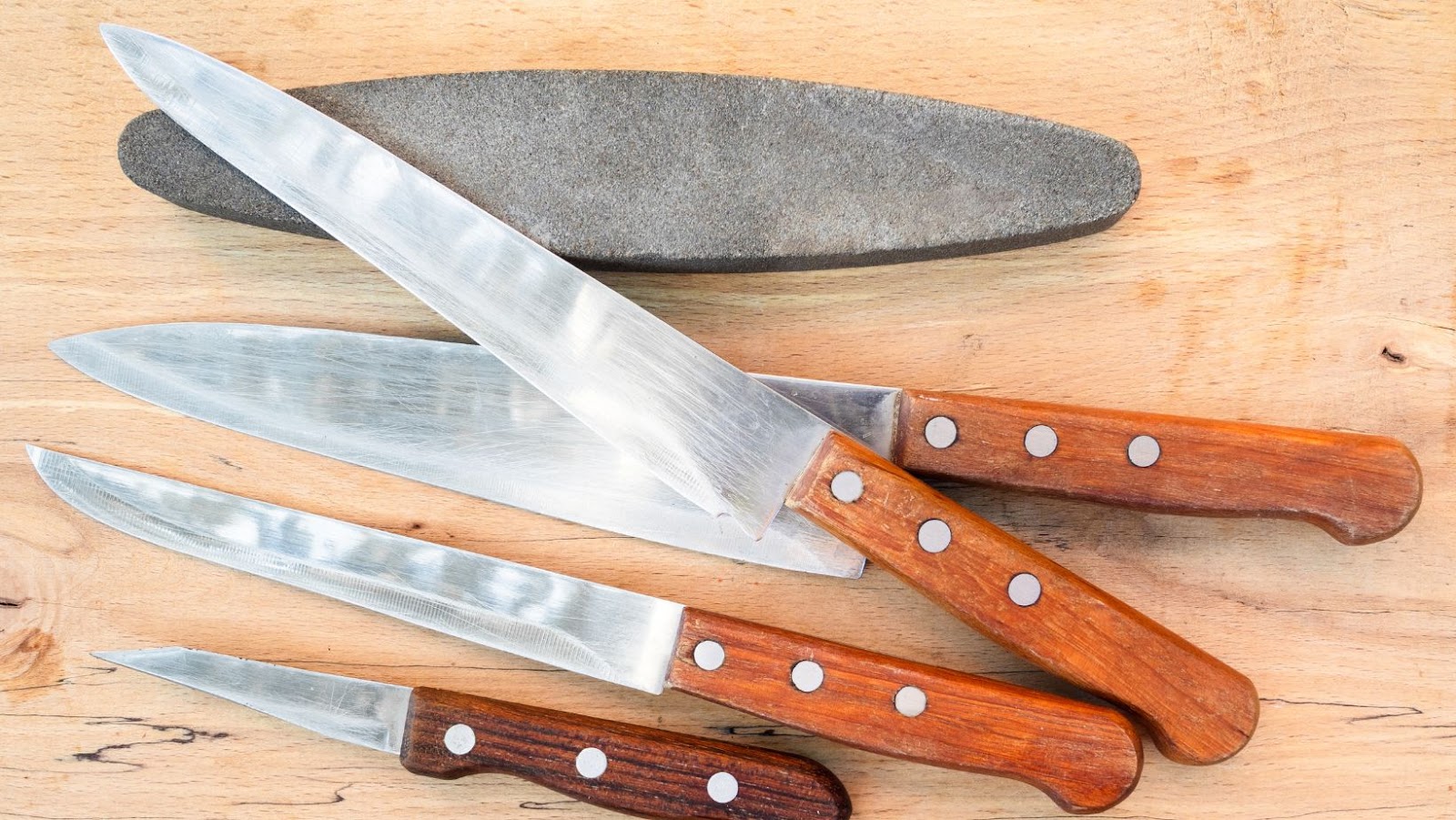
Having well-sharpened knives in the kitchen is essential for clean and precise cuts. Whether slicing vegetables, deboning meat, or chopping herbs, sharp knives make tasks easier and safer. Dull knives, on the other hand, increase the risk of potential injuries. This guide walks you through the steps to properly sharpen your knives for perfect cuts every time.
What is the Difference Between Sharpening and Honing?
Sharpening and honing are terms often used interchangeably, but they have distinct meanings:
Sharpening involves reshaping the edge of the knife by removing a small amount of metal from the blade to restore a sharp edge.
Honing aligns the micro-serrations on the edge without removing metal, typically done with a honing rod.
Understanding this distinction helps you choose the right method based on your knife’s condition.
Why do Knives Get Dull?
Knives get dull over time and use. Cutting hard foods, accidentally hitting bones or hard surfaces, and using an improper cutting board can accelerate this process.
Even high-quality knives require regular maintenance to keep their edge. Knowing why knives dull helps in better care and prolongs their lifespan.
What is a Whetstone, And How do you Use It?
A whetstone is a traditional tool used for sharpening knives. Different types of stones exist, each with specific grits for various purposes. Coarse grit stones reshape the edge, while fine grit stones refine and polish it.
To use a whetstone, first, soak it in water for 10-15 minutes. Hold the blade at a 15-20 degree angle and rub it in steady motions.
How to Use an Honing Rod Effectively?
A honing rod maintains the sharpness of knives between sharpenings. It doesn’t remove metal but realigns the edge.
Hold the rod vertically and slide the knife blade at a 20-degree angle, moving it from top to bottom along the rod’s length. A few passes usually suffice to maintain the edge.
What are the differences between manual and electric sharpeners?
Manual sharpeners are compact and easy to use, so they are ideal for home use. They usually have multiple slots with different grits for progressive sharpening.
Electric sharpeners, although more expensive, offer superior efficiency and speed. They use motorized abrasive disks to quickly and effortlessly refine the blade.
When looking to sharpen your knives quickly and effectively, investing in a good sharpener can make a significant difference. To learn more about quality sharpening tools, visit this page.
What Mistakes to Avoid During Sharpening?
- Wrong Angle
An incorrect angle can make your knife ineffective. Always try to maintain a consistent angle, usually around 20 degrees, for an optimal edge.
- Excessive Force
Applying too much force can damage the blade. A gentle, controlled motion is enough to get a good edge. Patience is key to avoiding removing too much material.
- Neglecting Regular Maintenance
Regular maintenance is essential to keep your knives in good shape. Sharpening only when the knife is dull makes the process harder and longer. Frequent honing can extend the life of your knives.
What Tips Do You Follow for Optimal Results?
How often should you sharpen your knives?
The frequency of sharpening depends on knife use. For standard home use, sharpening every 2-3 months is typically sufficient. Professionals should sharpen their knives at least once a week to maintain optimal performance.
How do you Care for and Store your Knives?
To prolong the lifespan of your knives' wash them by hand and dry them immediately after use. Store them in a knife block or on a magnetic strip to prevent damage. Avoid leaving them in a drawer where they can become dull or break.
Conclusion
A well-sharpened knife makes all the difference in the kitchen, offering precision and safety. By following these tips and using the right tools, you can keep your knives in perfect condition and enhance your culinary experience. Investing time in sharpening and maintaining your knives will allow you to enjoy perfect cuts and better performance in the kitchen.



